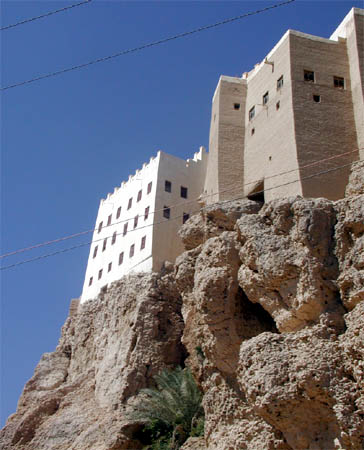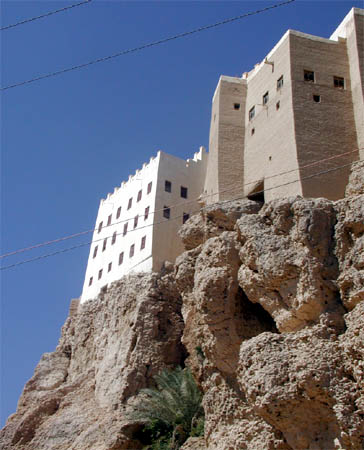
Yemeni historical cities, living cities threatening of immigration [Archives:2002/39/Culture]
September 23 2002
BY MUJAHED AL MUSSA’ABI
YEMEN TIMES STAFF
mujahed75ye@ yahoo.com

So, a historical city of good economic conditions and infrastructure is a living city. It is exactly like a big museum, but of live objects, among modern city. Unfortunately, it seems that the future of these cities, in the absence of a clear protection policy, is at risk since inhabitants are shifting to urban cities leaving their historic cities to collapse and deteriorate. This can be mainly ascribed to the deteriorating living conditions and economic depression in those cities. Not only that, but what is more regrettable is the irresponsible changes of the historic features of these cities by inhabitants or authorities equally by adding new structures to it or destroying its valuable assets.
Thus, historic cities have two choices, either to be distorted and surrender to the approaching modernization or to be vacant dead cities. In fact, it is a very complicated problem of various sides. First we cannot convince those inhabitants to live there without providing them with the essential needs of life or without creating more job opportunities. Undoubtedly, without the economic recovery of a historic city, it will be a dead city and people will leave it for the sake of a better life somewhere else.
Therefore, one of the key reasons for immigration from historic cities is the lack of economic growth which is necessary for populations to settle down. So, it is the responsibility of the government and private sector to invest in these historic cities, raising awareness of the people, and assisting them to repair and protect their cities by different means. We should indicate that the government of Yemen is yet unconvinced of the urgent need to consider the cultural heritage as a vital developmental sector. It is sustainable wealth which we should invest well not only for tourism, which has become the future industry, but because it is a witness of our glory, our character and identity. However, every historic city has its own conditions and problems which cannot be generalized on all historic cities.
There are different ways of revitalizing our historic cities and saving our built heritage. The city of Zabid, for example, was a famous city of scholars in which people from different countries stayed to get knowledge and study different sciences in its small schools or (Arbetah)). Now, it suffers a lot from economic depression which will turn it to a dead city. If the government invests in this area and enhances the scientific and the economic movement in the city, it will be revived and returned to what it was in the past or even better. So it is a matter of setting a suitable policy to protect and revitalize our cultural heritage representing in the historic cities.
However, at last the government started to recognize the immanent danger facing historic cities , asking friendly countries for help. Now, there is great cooperation between our country and the government of the Netherlands resembled in the Urban Cultural Heritage Program UCHP. This program, which initiated its activities in 2001, is working in full swing to raise people’s awareness and provide different technical assistance for the protection of our historic cities. Such a project, needs a hand up and positive reaction from concerned authorities and the public as well to carry our its mission successfully.
——
[archive-e:39-v:2002-y:2002-d:2002-09-23-p:./2002/iss39/culture.htm]


